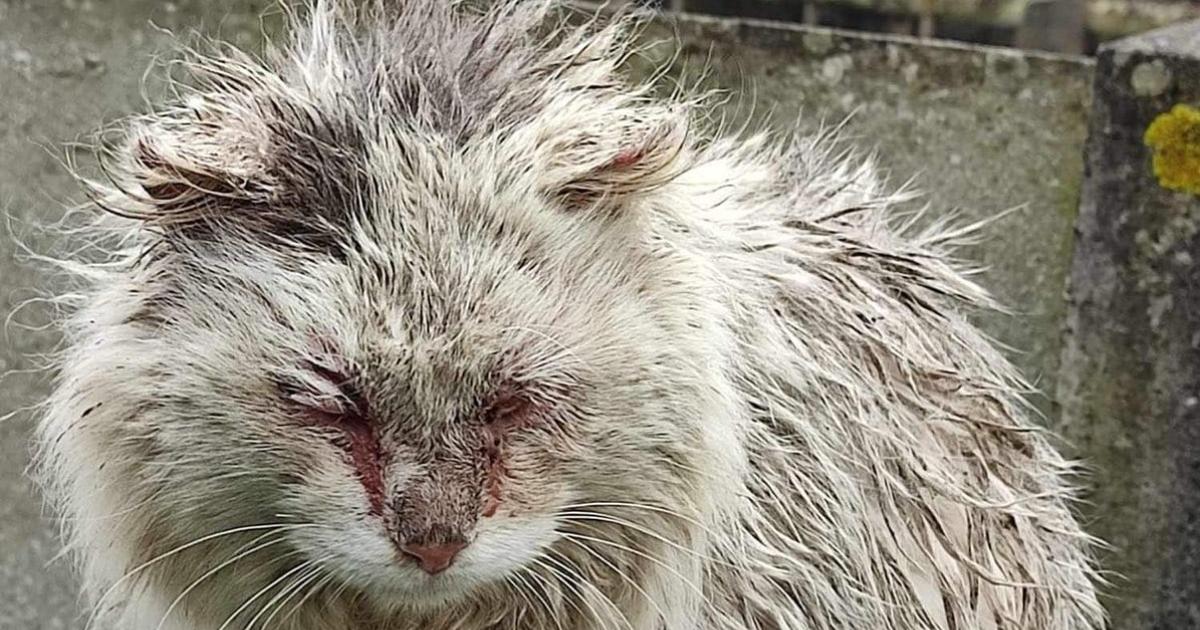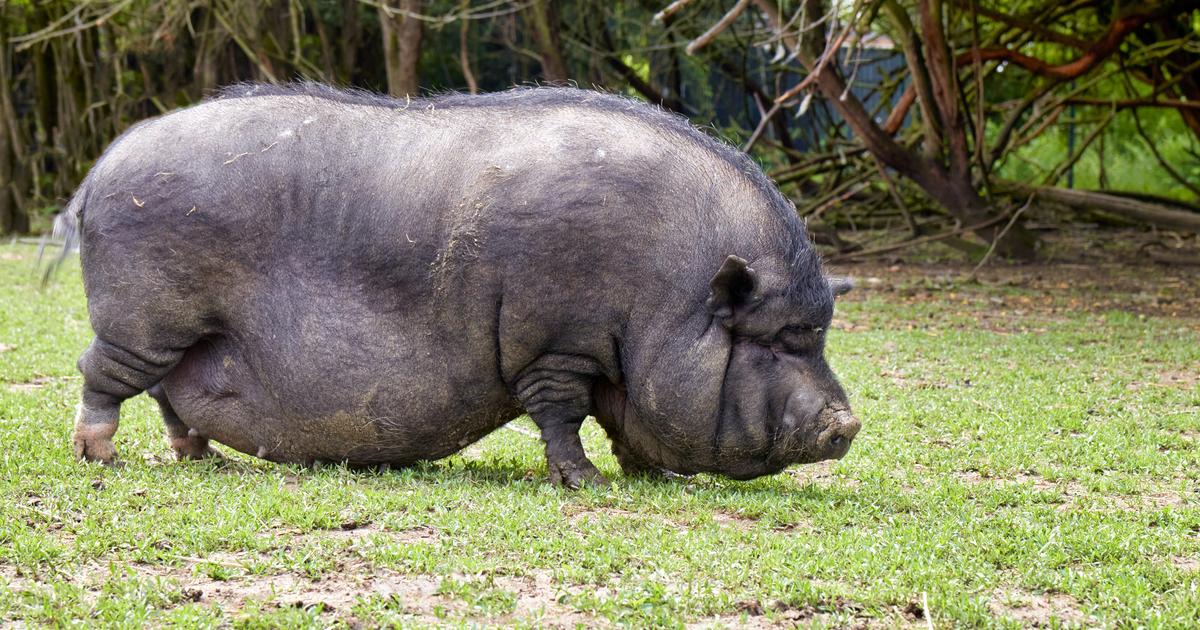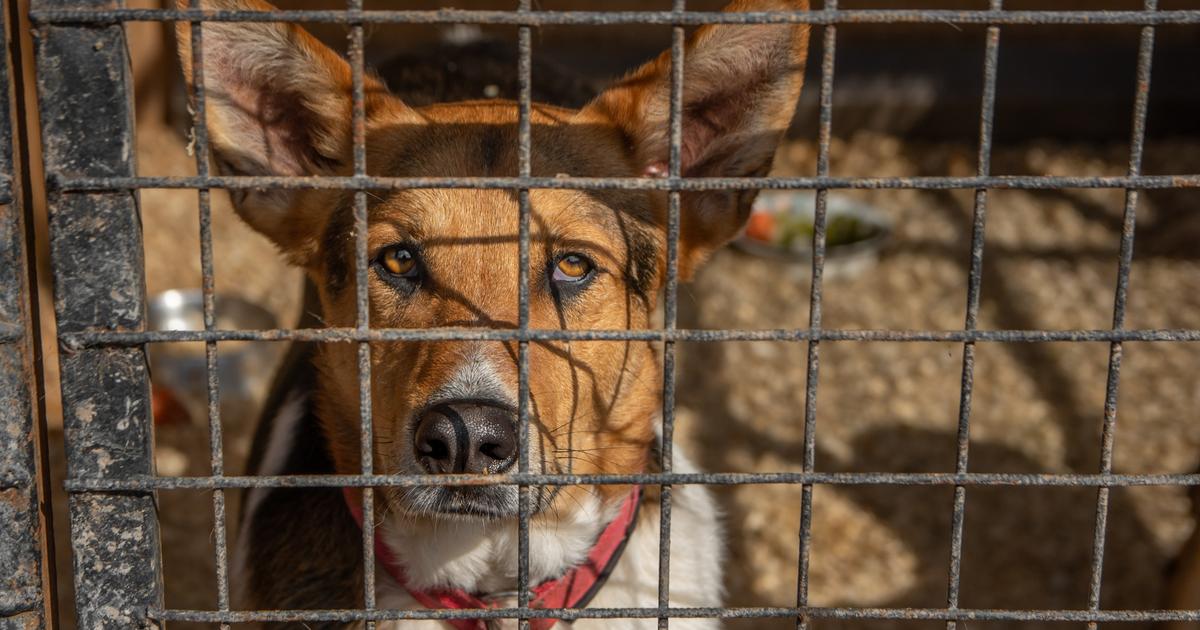Raquel Pau has a house full of cats, but later on the street she takes care of more than 80. She is an accredited volunteer with a card from the Madrid City Council to feed and take care of these stray animals.
"Once I start with a feline colony I can't stop going, it's a horrible stress when other plans arise to look for someone to take care of them, I have remorse, as if I had abandoned them," he says as he prepares to make his round of every two days through different streets of Madrid.
Like her, there are thousands of authorized people, almost all of them women, who care for stray cats in cities across the country.
In Barcelona there are about 660, in Valencia 600, in Madrid 2,200...
photo gallery
The cat sitters of Madrid, in pictures
Loaded with buckets of feed and jerrycans of water, these women usually go out at night, when darkness reveals a very different side of the city.
At sunset, cats are no longer invisible and the scale of the problem is better understood: feline colonies are a phenomenon that continues to grow in the country, with what this means for the health of cities, the other species that prey and the cats themselves turned into vagabonds, other spoils of modern societies.
The volunteers who help these animals also prefer the night because they meet fewer people: "Sometimes they still pick on me for feeding them, the card helps us deal with neighborhood aggression: before they threatened me with calling the Police , now I am the one who says he is calling”.
"Sometimes they still pick on me for feeding them, the card helps us deal with neighborhood aggression: before they threatened to call the police, now I'm the one who says I'm calling," says Raquel Pau, one of the thousands of volunteers from the country accredited to feed felines
Raquel is 55 years old and has been feeding stray cats for more than 20 years.
She started with the ones she saw on the street next to her sculpture workshop, she felt sorry for how bad they were, but then she discovered other felines in nearby areas and she moved further and further away from her with the bucket. I think of her.
She today drives her white van to go through several colonies in distant points of the city, where she takes care of about 80 cats alone.
Raquel Pau, with one of her cats rescued from the street, in her sculpture workshop.Álvaro García
These accredited volunteers leave feed, never leftover food (which can cause bad smells and dirt).
In addition, they not only feed, but also sterilize animals.
This is the so-called CER method (Capture, Sterilization and Return), a system to stop the expansion of these cats without sacrificing them and letting them live freely on the street.
It is the way that the preliminary draft law for the protection and welfare of animals wants to extend throughout Spain, to control urban cats while protecting them as pets, an approach highly criticized by conservation biologists for the damage to the biodiversity caused by the kittens.
For Raquel, killing the cats is not an option.
Although she acknowledges that "there are still many women who feed without sterilizing and this is a problem,
Well, that shoots up the number of cats.”
"If you're not going to sterilize, don't feed," he is indignant.
To sterilize them, these women first have to learn how to hunt these elusive animals.
Tonight, Asun Pau and Choni Sánchez (both 66 years old) go through Madrid with a cage in the car to see if they can catch a cat that they think may already be pregnant.
“I have a terrible time, I feel sorry for capturing them, emotionally it is very stressful,” says the first.
"But there is no other choice, if out of 15 cats you leave 2 without sterilizing, in a year you have 8 or 10 new ones", settles the second.
Rebeca R. (36 years old) and Eva Crespo (44) have also gone out to take a look at the feline colonies that they take care of among several volunteers.
"They look at us like crazy cats, socially, it's frowned upon, but I don't care what they say," says Rebeca, who sneaks between some trees to show inside a colony camouflaged among the vegetation: a corner in where they have placed containers for water, food and some wooden crates where the cats can take refuge.
"In winter we put blankets on them," says this volunteer who cares for about 60 of these cats.
"They look at us like crazy cats, socially, it's frowned upon, but I don't care what they say," says Rebeca R, who cares for 60 felines on the street
In December 2022, it will be 20 years since the ban on slaughtering pets such as cats in Barcelona, which uses this CER sterilization system to control populations, following the example of Rome.
As explained by Anna Ortonoves, head of the Animal Management and Protection Department of the City Council of this city, they rely on the volunteering of more than a dozen social entities, within a program with 160,000 euros in aid for 2022. "The a colony cat is a free animal, it has to be free”, points out this municipal official, who assures that in Barcelona 600 feline sterilizations are carried out per year.
"In the year 2022 we cannot continue thinking that the way to solve the problem is sacrifice, when it has been shown that this does not work."
“The cat is a predator, yes.
Martina Carrete, professor of Ecology at the University of Olavide and one of the authors of a recent letter from a group of researchers against this form of control of stray cats, leaving them free in the cities, does not think the same.
“We don't want them to disappear, but they can't be abandoned in the streets”, highlights this biologist.
"The ethics thing has its trap, it may seem to one that it is not ethical to kill an animal, but neither is it to let a cat free that is going to kill other animals or spread diseases."
The writing of the scientists, including Miguel Delibes de Castro, one of the great experts on the Iberian lynx, ensures that "the domestic cat has been involved in more than a quarter of the contemporary extinctions of birds, mammals and reptiles in everyone,
and is considered the most damaging non-native predator”.
When they are pets, the teacher considers it irresponsible to let cats leave the house alone and even defends that they should only be allowed to walk on a leash, like dogs.
As for those on the street, Carrete does not believe that the CER method is the solution that is needed: "Either sterilization is done in a brutal way, in a very large area and with a very high percentage of cats, or it is not valid for any".
Rebeca lights up with a mobile in one of the neighborhoods she cares for.Álvaro García
In Barcelona today there are about 640 colonies in which about 7,300 cats live.
Although the Barcelona City Council claims to be unaware of the percentage of sterilized animals, official data shows a decrease in these animals.
In Madrid, there are 1,700 colonies registered, but there is no official number of felines.
In Valencia, they have a count of 600 colonies and they estimate that there are between 15,000 and 20,000 cats.
In Seville, where they have recently started with this system, they count 88 colonies and they do not know the number of animals Among all the Spanish cities, the most striking case right now is Córdoba: there they have registered 1,090 colonies with some 3,200 felines, but in in the last year and a half they have sterilized 63% of them and they hope to reach 100% by the end of 2022.
In a vacant lot in Madrid next to some shacks, Raquel arrives with her van to continue feeding cats.
Some of the cats come out to meet him even before he gets off the vehicle.
"I don't give these names, because then you suffer a lot, they don't last long here," she says.
The cats in this colony usually end up dead or in her sculpting studio, and she can't help it.
According to her calculations, only on the feed for the colonies, which she is now through the roof, she spends about 3,500 euros a year out of her own pocket.
And to this we must add the sterilizations, about 40 euros for cats and about 65 for female cats.
Although the Madrid City Council finances these interventions today, the waiting lists are long.
“I am doing all the work myself, but I have castrated more than 300, they should fear me,” she laughs.
According to Raquel, she spends about 3,500 euros a year out of her own pocket on feed for the colonies alone, which is now through the roof.
And to this we must add the sterilizations, about 40 euros for cats and about 65 for female cats.
In another point of the city, Asun tells how the volunteers have been perfecting the capture techniques.
"At first, the vet gave us a pill and we had to find where the cat had fallen asleep."
“Then we took him to be sterilized”, continues his companion Choni, “and many veterinarians did not know how to take these cats, they are not like the ones at home”, she affirms seriously shaking her head.
Now they have their own cages, although today they will not finally use it because the cat they were looking for has given birth, they arrived late, there is already a new litter in the city.
These two veterans are part of the Barrio Cateras, a group dedicated to supporting other caregivers.
As they emphasize, the collaboration and networking between all these volunteers is key to facing an overwhelming task with their limited means.
"This is very slave and not very grateful, the people who take care of the cats don't even have vacations," says Asun, who already has three dogs and three cats at home who have been picked up from the street.
"Maribel, an 80-year-old lady, takes two buses to go feed them," says Choni, who also lives with two rescued felines.
Faced with criticism from biologists, Asun assures that they are not the ones who have left these animals, old pets or descendants of them, there: "What we are trying to do is that there are no cats on the street."
Stray cats that have the beak of one of their ears cut off are those that are already sterilized.Álvaro García
In Córdoba, Francisco Ruiz, manager of the municipal company Sadeco, which deals with the sterilization program, explains that a few years ago they carried out a pilot project with 20 feline colonies and a budget of 30,000 euros.
"What we learned then is that for it to work it has to be fast and massive, acting at the same time throughout the city, otherwise it's a waste of money."
With this philosophy, in January 2021 this town of 320,000 inhabitants launched a much more ambitious plan endowed with 250,000 euros per year, with the collaboration of the Federation of Animal Protection Associations (FAPAC) and the Official Veterinary College of Córdoba .
The animal defenders catch the cats, the veterinarians sterilize them (in addition to deworming them and putting a chip on them) and the City Council pays for it.
As Ruiz details,
Regarding the debate around the preliminary draft of the animal protection law, Ruiz considers that everyone must be listened to: "My opinion is that we cannot live with our backs turned to people's sensitivities and with this issue, sensitivities are very diverse.
But by making an effort to understand, results are achieved”.
cat free zones
A recent study by researcher Mario Díaz, from the Museum of Natural Sciences, shows how cats not only have a direct impact by preying on birds, but their presence also changes their behavior out of fear, making it difficult for them to find food or reproduce .
This researcher believes that it is necessary to define areas free of these felines, where the other species are protected.
For her part, Helena Bat, a psychologist specializing in conflicts with cats and a veterinarian in training, considers it essential to raise awareness.
"We are the humans who are putting the cats in the middle," she insists.
"You have to raise awareness not only in the cities, but also in rural areas, where it is very complicated to explain to people that they have to sterilize cats and not let them go outside."
You can follow CLIMA Y MEDIO AMBIENTE on
and
, or sign up here to receive
our weekly newsletter












/cloudfront-eu-central-1.images.arcpublishing.com/prisa/KMEYMJKESBAZBE4MRBAM4TGHIQ.jpg)

